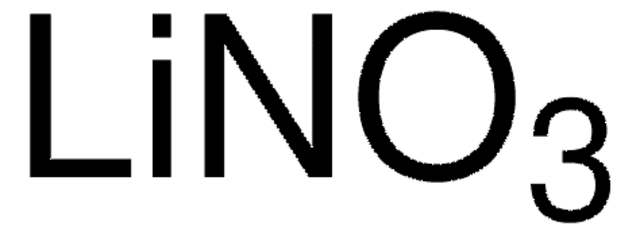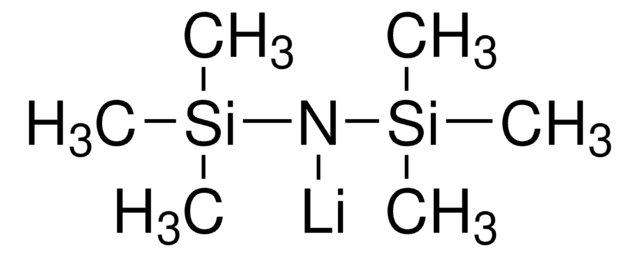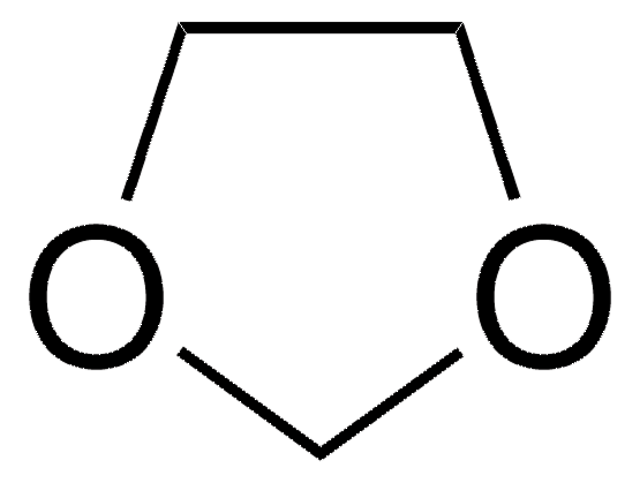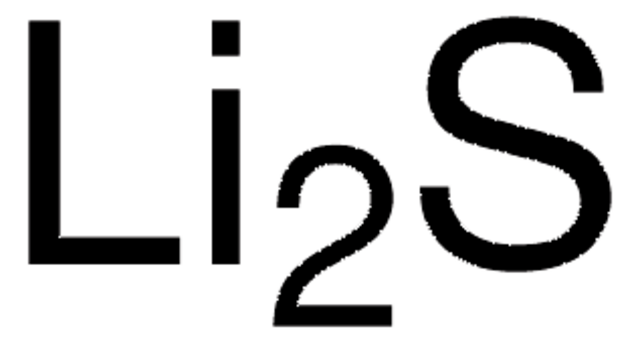930938
Lithium nitrate
battery grade, 99.999% trace metals basis
Synonym(s):
Lithium salt of nitric acid
About This Item
Recommended Products
grade
battery grade
Quality Level
Assay
99.999% trace metals basis
form
powder
greener alternative product characteristics
Design for Energy Efficiency
Learn more about the Principles of Green Chemistry.
sustainability
Greener Alternative Product
impurities
≤15 ppm (trace metals analysis)
mp
264 °C (lit.)
solubility
soluble (H2O: highly soluble(lit.); alcohols: soluble(lit.); acetone: soluble(lit.))
application(s)
battery manufacturing
SMILES string
[Li+].[O-][N+]([O-])=O
InChI
1S/Li.NO3/c;2-1(3)4/q+1;-1
InChI key
IIPYXGDZVMZOAP-UHFFFAOYSA-N
Looking for similar products? Visit Product Comparison Guide
General description
Lithium nitrate is produced by reacting nitric acid and lithium carbonate, which evolves carbon dioxide and water. The resulting material is purified and dried.
Application
Our 99.999% lithium nitrate is also well-suited for use as an additive to electrolytes in lithium-sulfur batteries and lithium metal batteries. Lithium nitrate can passivate the surface of lithium metal and suppress the redox shuttle of the dissolved lithium polysulfides on the lithium anode. In one study, the addition of 0.3 M LiNO3 nearly doubled the gravimetric capacity of lithium-sulfide batteries. Another study found that the dissolution of 1 to 5 wt% LiNO3 to the electrolyte suppressed growth of lithium dendrites and extended cycle lifetimes. Similarly beneficial effects of lithium nitrate as an additive have been observed with Li2S cathodes, carbon nanofiber-encapsulated sulfur cathodes, cobalt sulfide (Co3S4) cathodes, and polyacrylonitrile-sulfur composite cathodes. Even lithium metal anodes with LiNi0.8Co0.15Al0.05O2 (NCA) cathodes with LiNO3 added to the electrolyte showed higher coulombic efficiencies and suppressed dendrite formation compared to the electrolyte without LiNO3.
Signal Word
Warning
Hazard Statements
Precautionary Statements
Hazard Classifications
Acute Tox. 4 Oral - Eye Irrit. 2 - Ox. Sol. 3
Storage Class Code
5.1B - Oxidizing hazardous materials
WGK
WGK 1
Flash Point(F)
Not applicable
Flash Point(C)
Not applicable
Choose from one of the most recent versions:
Certificates of Analysis (COA)
Sorry, we don't have COAs for this product available online at this time.
If you need assistance, please contact Customer Support.
Already Own This Product?
Find documentation for the products that you have recently purchased in the Document Library.
Our team of scientists has experience in all areas of research including Life Science, Material Science, Chemical Synthesis, Chromatography, Analytical and many others.
Contact Technical Service







